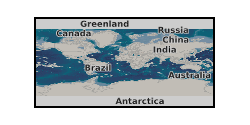Keyword
Zinc isotopes
Type of resources
Available actions
Topics
Keywords
Contact for the resource
Provided by
Years
Formats
Update frequencies
From
1
-
1
/
1
-

Vanadium and Zinc isotopic compositions of powdered basalt samples from the active volcanic zones of Iceland. These samples have been extensively characterised for other geochemical quantities in a series of papers (Marshall et al, 2022, Barry et al., 2014; Caracciolo, 2021; Caracciolo et al., 2020; Füri et al., 2010; Halldórsson et al., 2016a, 2016b; Macpherson et al., 2005; Rasmussen et al., 2020).
 NERC Data Catalogue Service
NERC Data Catalogue Service